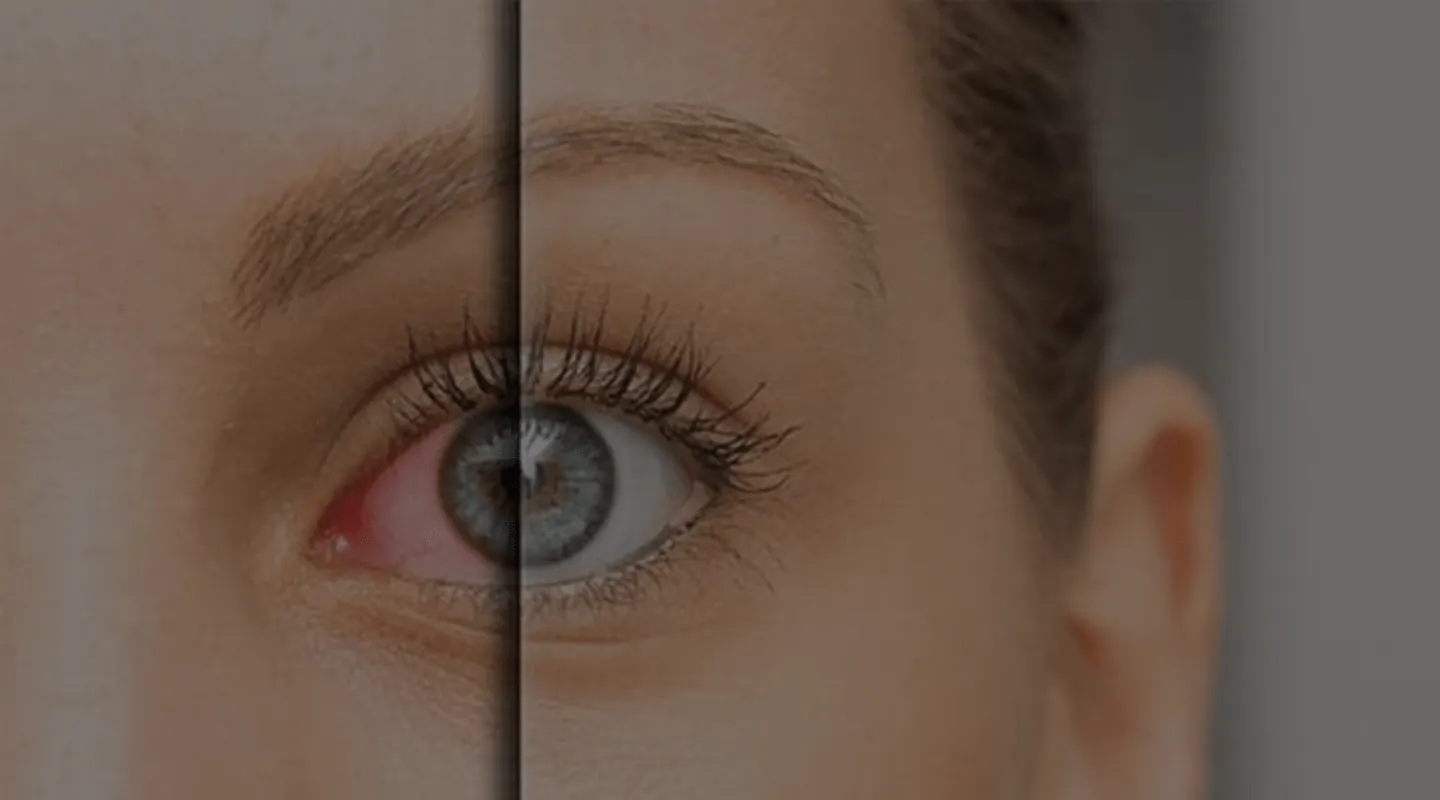
Glaucoma Surgery
Your Glaucoma Surgery in Tunisia at Affordable Prices
Benefit from accurate diagnosis, tailored treatment, and personalized follow-up in a professional setting
How does it work?
Glaucoma Surgery in Tunisia
In Tunisia, glaucoma surgery (to treat glaucoma) is a recommended procedure to treat this eye disease that affects the optic nerve. With a degenerative evolution, it leads to a progressive loss of vision until complete blindness. Glaucoma mainly affects patients over 40 and 50 years of age. In Tunisia, we offer a surgical treatment perfectly adapted to this disease. A highly qualified ophthalmologist surgeon will perform your operation in an ultramodern medical infrastructure. We provide you with all the necessary information for your stay in Tunisia for eye surgery.
What is Glaucoma?
A patient with glaucoma suffers from increased eye pressure, resulting in vision problems. The optic nerve is affected, and the patient risks experiencing more or less significant visual field degradation. The most diagnosed type of glaucoma is chronic glaucoma. The other type is acute glaucoma, which is less common. Before considering surgery, other types of glaucoma treatment are considered to treat glaucoma, including eye drops and laser treatment. When these trials do not produce the expected effects, the preferred solution is surgical intervention. The various therapies offered, if implemented correctly, can lead to very rewarding results.
What is the cost of glaucoma surgery in Tunisia?
In Tunisia, the packages offered for glaucoma treatment are very advantageous. The packages include all the costs of the intervention in a modern clinic. Packages including accommodation are also possible on request. During your stay, you will be cared for by a team of highly competent health professionals who will ensure your well-being and recovery. Do not hesitate to contact the Tunisia Destination Santé team today to obtain a quote and begin the necessary procedures. We will be at your side every step of the way.
What you need to know before glaucoma surgery
To optimize your vision, it is important to understand that glaucoma treatment does not aim to directly improve vision, but rather to regulate eye pressure and prevent worsening of the visual field. However, it is possible to combine this intervention with cataract surgery to enhance your vision. Before proceeding, it is essential that your ophthalmologist performs a thorough examination of your eyes to assess the most appropriate option. A complete medical file will also be required, as well as certain examinations and analyses such as a detailed ophthalmological examination, a complete health check-up, and blood tests.
When considering surgery, it is important to understand that short-term and long-term risks are associated, as with any other operation. It is crucial to be aware of these before going to the clinic and to discuss them with your surgeon. Do not take this decision lightly. Possible side effects of the operation include:
- Permanent vision loss;
- Bleeding inside the eyes;
- Problems with healing;
- Infection inside the eye;
What are the symptoms of glaucoma?
Open-angle glaucoma symptoms
With open-angle glaucoma, there are no warning signs or obvious symptoms in the early stages. As the disease progresses, shadow areas may develop in your peripheral (side) vision. Often, people with open-angle glaucoma do not notice any change in their vision until the damage is significant. This is why glaucoma is nicknamed the “silent thief of sight.” To avoid gradually losing your vision, it is essential to undergo regular ophthalmological examinations. These will allow your doctor to detect the disease before it worsens. Do not hesitate to consult your ophthalmologist to find out the ideal frequency of these examinations.
Closed-angle glaucoma symptoms
To ensure a better understanding, here is a summary: Individuals likely to suffer from closed-angle glaucoma generally do not show any symptoms before an attack. However, some warning signs may include blurred vision, halos around lights, mild migraines, or eye pain. If you experience any of these symptoms, it is essential to consult your ophthalmologist immediately for a thorough examination. A closed-angle glaucoma attack includes the following:
- Severe pain in the eyes or forehead;
- Redness of the eye;
- Decreased vision or blurred vision;
- Seeing rainbows or halos;
- Headache;
- Nausea;
- Vomiting;
Normal-tension glaucoma symptoms
Individuals suffering from “normal-tension glaucoma” have eye pressure within the normal range. However, they present symptoms of glaucoma, such as blind spots in their visual field and damage to the optic nerve.
How does glaucoma surgery in Tunisia take place?
The procedure can be performed under general or local anesthesia. In case of local anesthesia, the anesthetic will be injected near the eye. The operation takes an average of 60 minutes. Once the surgical intervention is over, you will be able to leave the clinic the same day. The main objective of this procedure is to reduce the pressure in your eye. The surgeon will therefore work to create drainage pathways to allow the evacuation of tissues and fluids responsible for this increase in pressure. The day after the operation, the dressing that will have been applied to your eye will be removed.
What are the after-effects of glaucoma surgery in Tunisia?
Following the operation, you will have to follow your surgeon’s prescription to the letter. You will have to take antibiotics and other medications for several days after leaving the clinic. You will also have several consultations to monitor the healing process of your eye and the smooth progress of your recovery. During the first few days following the operation, you will have blurred vision, which is totally predictable. Gradually, your vision should return to its usual state. You will simply need to be patient. To avoid any danger, it is recommended not to practice contact sports and not to engage in activities that could harm your eyes, such as receiving a ball to the face during a tennis match or receiving a blow to the eye during a boxing match, for example.
Our advantages


Organizing your Glaucoma surgery in Tunisia with TDS
Call on the Tunisia Destination Santé team to assist you in organizing your medical stay in Tunisia. We will be at your side every step of the way and provide you with all the necessary information. Do not hesitate to contact us to request your quote and for any questions concerning your glaucoma surgery stay in Tunisia.
Your health, our priority.
Request your free quote.
Frequently Asked Questions
Glaucoma often begins by damaging peripheral vision. Patients may not notice peripheral vision loss until it is significant, as central vision remains initially intact.
A family history of glaucoma is a major risk factor. Certain gene mutations, such as those affecting the MYOC and OPTN genes, have been associated with glaucoma.
Yes, there is a form of glaucoma called acute angle-closure glaucoma that can develop very rapidly and requires immediate medical intervention to prevent vision loss.
Some physical activities, particularly those that increase intraocular pressure, such as weightlifting exercises, can potentially affect glaucoma. However, moderate exercise such as walking and jogging can help reduce intraocular pressure.
Aside from vision loss, atypical symptoms may include eye pain, headaches, nausea, and blurred vision, especially in cases of acute angle-closure glaucoma.
Significant fluctuations in intraocular pressure can be more damaging than consistently high levels. These variations can cause additional stress on the optic nerve.
Yes, patients with glaucoma can wear contact lenses, but they should inform their ophthalmologist, as some anti-glaucoma eye drops can affect the comfort and safety of lenses.
Side effects may include tingling, blurred vision, changes in eye color, longer eyelashes, and systemic effects such as headaches and respiratory problems.
Yes, glaucoma can be associated with other eye diseases such as cataracts and macular degeneration, increasing the complexity of treatment.
Recent treatments include minimally invasive drainage devices, gene therapies, and new classes of drugs that more specifically target the mechanisms of intraocular pressure.
